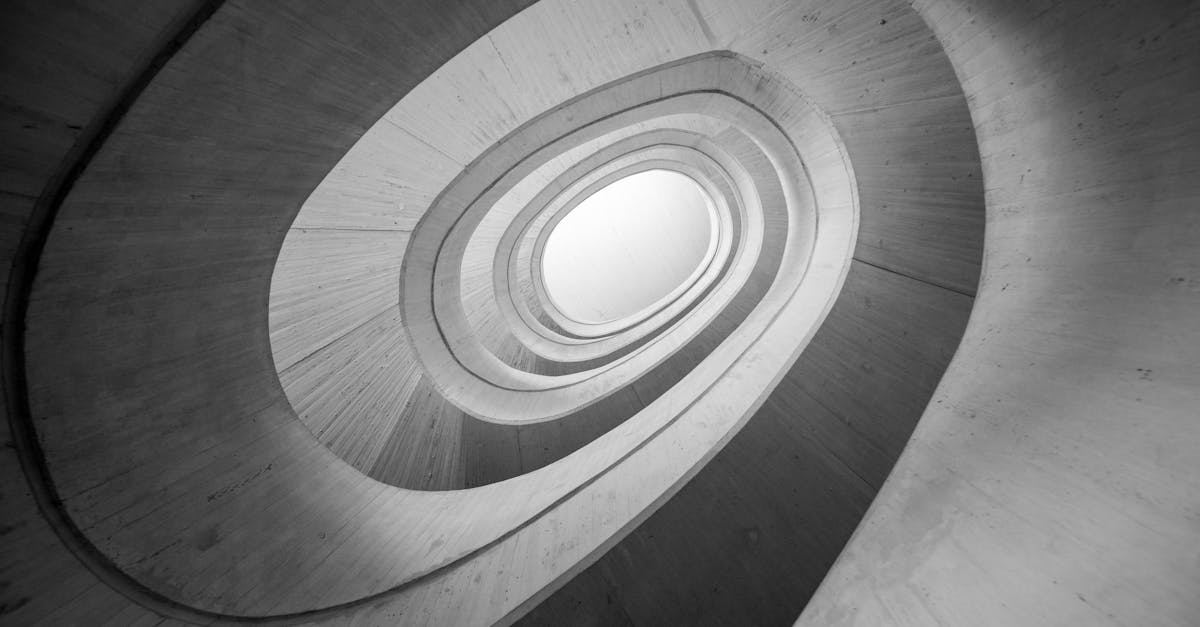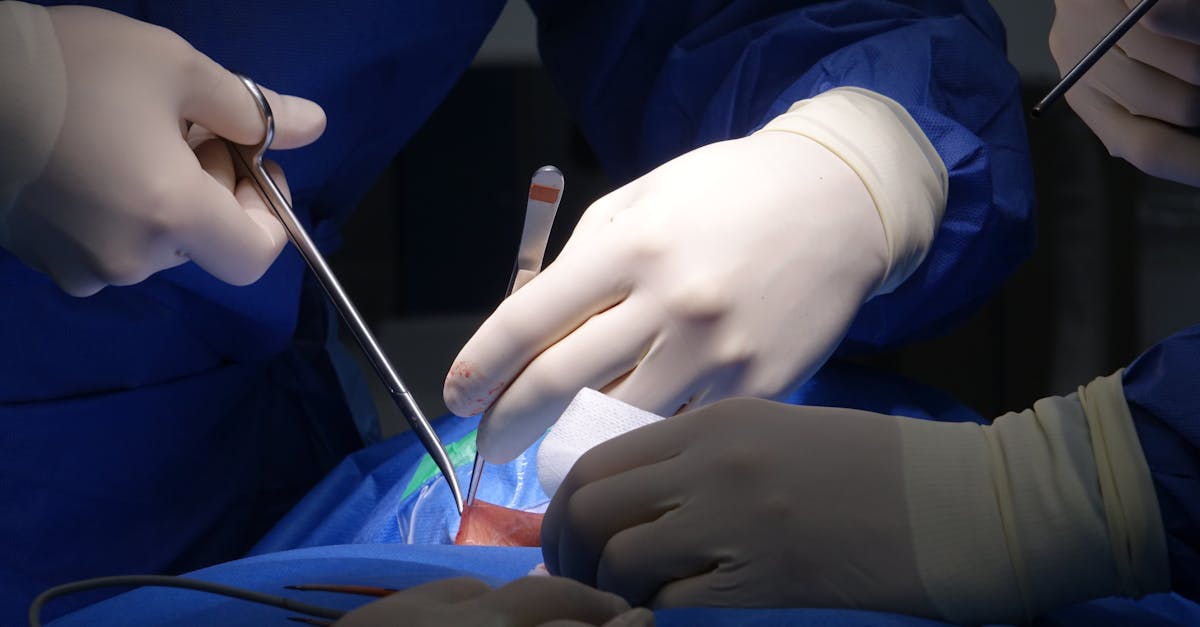Dizziness disrupting your mornings? You’re not alone.
Vertigo and dizziness can significantly impact your daily life, especially if you’re struggling with conditions like BPPV or vestibular neuritis. Effective vertigo exercises are designed to improve your balance and help you regain your stability. These targeted movements focus on recalibrating your body’s equilibrium, ultimately helping to alleviate feelings of dizziness and anxiety that often accompany these conditions. By incorporating BPPV exercises at home and incorporating gentle techniques, you can not only reduce symptoms but also improve your overall posture and functional balance. Ready to take control of your wellness journey? Reclaim your health and wellness at Pulse Align Clinics. Book your appointment today!
Are you struggling with lower back pain and poor posture?
Many individuals experience discomfort stemming from dizziness and balance problems, significantly impacting their daily lives. Through effective exercises to reduce vertigo and enhance your morning stability with Pulse Align techniques, you can discover how to better manage conditions such as BPPV (benign paroxysmal positional vertigo), vestibular neuritis, and other dizziness causes. By implementing targeted vertigo exercises and understanding natural remedies for dizziness and nausea, you can regain confidence in your stability. Pulse Align’s holistic approach emphasizes core strengthening and posture correction, making it a suitable solution for those looking to alleviate dizziness and anxiety, especially when standing up suddenly. Embrace this opportunity to take control of your well-being and find balance in every step you take.

Enhance Your Stability with Pulse Align
Are you looking to improve your posture and regain your sense of balance? At Pulse Align, we believe in the power of neuromuscular recalibration to help clients achieve optimal well-being. Our gentle, technology-supported approach promotes muscle tone symmetry and supports the body’s natural processes, making wellness accessible for everyone.
Understanding Pulse Align’s Holistic Approach
Pulse Align focuses on using gentle stimulation to assist the body in returning to a state of natural balance. This method enhances posture improvement and encourages the body to function effectively, which can create a positive ripple effect on overall well-being. Whether you’re experiencing tension or discomfort, our techniques are designed to guide you toward a more balanced lifestyle.
The Holistic Benefits of Natural Healing
Our approach aligns with the principles of holistic wellness, prioritizing the body’s innate ability to heal itself. At Pulse Align, clients often share experiences of feeling more centered and stable after engaging with our solutions. By fostering natural healing and balance, we offer a supportive environment where clients can flourish, free from the discomfort of misalignment.
Client Testimonials
Many clients have discovered the transformative impact of our services. As one client noted, “By incorporating the gentle techniques from Pulse Align, I’ve begun to improve my posture naturally and feel a noteworthy difference in my daily activities.” This sentiment resonates with many, highlighting how our integrated approach can significantly enhance comfort and overall vitality.
Take the Next Step Toward Well-Being
If you’re ready to explore how Pulse Align can help enhance your stability and well-being, we invite you to find a clinic near you in cities like Montreal, La Prairie, Terrebonne, Chicoutimi, Charlesbourg, Saint-Jérôme, Châteauguay, Sainte-Marie, Les Escoumins, Granby, or Panama City. Schedule a consultation today and discover how our safe and non-invasive techniques can support your wellness journey!
Remember, Pulse Align complements your existing healthcare practices while promoting a holistic approach to well-being for the entire family. Your path to natural balance starts here!
For further information on our techniques and benefits, feel free to explore our other informative articles on Pulse Align’s website.
Medical Disclaimer
The information provided by Pulse Align is intended for educational purposes only. It is not a substitute for professional medical advice or treatment. Always consult your healthcare provider for any medical concerns.
Effective Exercises to Reduce Vertigo and Enhance Morning Stability
- Basic Head Movements: Gently move your head to recalibrate your vestibular system.
- Core Stability Exercises: Strengthen your core to improve balance and posture.
- Tai Chi: Engage in slow, deliberate movements to enhance coordination.
- Cawthorne Exercises: Perform targeted eye and head movements to mitigate dizziness.
- Gentle Yoga Poses: Focus on stability-enhancing poses for improved flexibility.

Struggling with dizziness and balance problems? Understanding the best practices to improve your neuromuscular health is essential. In this article, we will uncover effective vertigo exercises that help manage conditions such as BPPV (benign paroxysmal positional vertigo), vestibular neuritis, and Meniere’s disease. Additionally, we will explore how these targeted movements can enhance your posture improvement and contribute to holistic recalibration for a steadier morning.
Understanding the Importance of Core Strengthening
Core strengthening is vital for overall balance. A strong core supports your trunk and helps reduce the chances of experiencing dizziness when standing up suddenly. Incorporating trunk exercises such as planks, bridges, and leg raises can significantly improve core stability while aiding posture correction. Regularly engaging in these activities promotes better body alignment, which is essential for individuals dealing with conditions such as labyrinthitis or dizziness and anxiety.
Basic Head Movements to Recalibrate Your Vestibular System
One of the simplest yet effective BPPV exercises at home is basic head movements. These exercises involve gentle tilting and turning of your head to recalibrate your vestibular system. Start by tilting your head to one side for a few seconds, then shift to the other side. This foundational practice helps address dizziness after head injury and mitigates effects caused by the inner ear.
Tai Chi: Gentle Movements for Balance and Coordination
Tai Chi is a meditative form of exercise that emphasizes slow, flowing movements. Practicing Tai Chi not only fosters natural balance but also enhances your ability to manage dizziness after head injury. These gentle movements allow individuals to gain better awareness of their body, promoting relaxation and coordination, which are essential in preventing vertigo attacks.
Introducing Cawthorne Exercises for Dizziness Relief
Cawthorne exercises are designed specifically for those experiencing dizziness. This method includes head and eye movements that help retrain your nervous system. For effective results, try simple practices, such as turning your head side-to-side while focusing on an object. These exercises can create a safety net for individuals managing conditions related to balance, such as Meniere’s disease.
Gentle Yoga Poses to Improve Stability and Flexibility
Incorporating gentle yoga poses into your routine will enhance both flexibility and stability. Focus on specific poses that emphasize balance, such as the Tree Pose. Gentle yoga not only nurtures the mind-body connection but also serves as a natural remedy for dizziness and nausea, contributing to an overall sense of well-being. Always choose postures that minimize head movements.
Fostering a Holistic Approach to Wellness
The key to managing dizziness causes while enhancing overall stability is embracing a holistic approach through effective exercises. Strengthening the core, practicing Tai Chi, performing Cawthorne exercises, and integrating gentle yoga will empower you to reclaim your health effectively. At Pulse Align, we understand the importance of tailored exercise plans that cater to individual needs.
Are you ready to embark on a path toward improved balance and wellness? Book a consultation with Pulse Align today to learn more about personalized exercise plans designed to enhance your neuromuscular health and support your body’s intrinsic healing abilities. With locations in Montreal, La Prairie, and Panama City, our team is here to assist you in your journey toward a steadier, more fulfilling life.
Effective Exercises to Reduce Vertigo and Enhance Morning Stability
| Exercise | Description |
|---|---|
| Basic Head Movements | Gently tilt your head side to side to recalibrate your vestibular system and decrease dizziness. |
| Core Stability Exercises | Engage in planks and bridges to strengthen core muscles, supporting better balance and posture. |
| Tai Chi | Practice slow, controlled movements that promote relaxation and coordination, alleviating dizziness. |
| Cawthorne Exercises | Perform head and eye movements to retrain the nervous system, minimizing vertigo symptoms. |
| Gentle Yoga Poses | Incorporate poses like Tree Pose for enhanced flexibility and stability, supporting overall balance. |

Embracing Wellness: Transformative Experiences with Pulse Align
Clients of Pulse Align have found tremendous relief from their vertigo symptoms through a series of effective exercises designed to enhance morning stability. The unique approach of Pulse Align not only emphasizes physical techniques but also embraces the body’s natural ability to recalibrate and restore balance. Many clients have reported feeling improvements in their overall wellness, experiencing what they describe as a natural recovery journey.
In La Prairie, clients seeking to restore balance have particularly appreciated the supportive environment that Pulse Align offers. One client shared, “I began my journey with Pulse Align searching for ways to manage my dizziness, and I was pleasantly surprised by how quickly I found my mornings becoming steadier. The gentle exercises not only helped my physical balance but also calmed my mind.” This sentiment resonates with many who have visited the clinic in La Prairie.
Residents of Mont-Royal have shared similar experiences. A local client mentioned, “I’m so grateful for the holistic approach at Pulse Align. The exercises I learned have given me the confidence to move about my day without the constant fear of dizziness.” Pulse Align emphasizes working closely with healthcare teams, ensuring that clients receive comprehensive support throughout their recovery journey.
In Terrebonne, an enthusiastic client remarked, “The targeted movements and lifestyle adjustments helped me reconnect with my body’s natural rhythms. I’ve noticed significant improvements not just in my balance but also in my overall well-being.” This reflects how Pulse Align’s methods have become a vital part of many wellness journeys.
Clients in Chicoutimi have also benefitted from this tailored approach. One individual shared their experience of how integrating these exercises into their daily routine has fostered a more balanced lifestyle, stating, “I never imagined that gentle movements could make such an impactful difference in my life. I feel lighter and more at ease.” This echoes the positive sense of community built around the shared pursuit of health and stability.
If you’re located in Châteauguay, Saint-Jérôme, or even beyond, similar empowering experiences await you. Pulse Align’s commitment to enhancing body function supports families and individuals alike in their quests for wellness. You can explore the transformative power of these techniques by visiting Our Clinics and discovering the nearest location.
Through thoughtful engagement and an inclusive approach, Pulse Align provides clients across various towns and regions with a supportive pathway to improved stability, overall wellness, and renewed vitality. Perhaps your journey awaits you, with the promise of regaining your balance with every step. Join the growing community of individuals embracing wellness with Pulse Align.
Are you struggling with dizziness and balance problems? Discover effective vertigo exercises to regain stability. If dizziness and balance issues are disrupting your daily life, exploring how vertigo exercises can enhance your stability and alleviate symptoms caused by BPPV or vestibular neuritis may be the solution. These targeted movements help recalibrate your body, improving confidence in everyday activities.
Pulse Align Clinics propose a unique, simple approach to neuromodulation that can help you reclaim your health. Don’t hesitate to BOOK YOUR APPOINTMENT today!
Are you seeking ways to improve your posture and functional balance? Discover the transformative power of neuromuscular recalibration through gentle stimulation techniques designed to promote your overall well-being. At Pulse Align, we focus on helping clients and families find natural, effective methods to restore balance and alleviate tension in their daily lives.
Our Mission
At Pulse Align, our mission is to deliver evidence-based, client-centered treatments that address the underlying causes of pain and dysfunction. By integrating advanced techniques and technologies, we strive to empower each person to take control of their health, ensuring a high standard of care, lasting relief, and an improved quality of life.
Experience the transformative power of five Vertigo Exercises for steadier mornings with a Pulse Align boost. If you often experience issues like dizziness, especially due to BPPV or vestibular neuritis, these targeted vertigo exercises can significantly enhance your stability and confidence. By integrating Pulse Align’s innovative techniques, you can effectively address the underlying dizziness causes and improve your posture, making your mornings much steadier.
Integrating these exercises into your daily routine can lead to significant improvements in managing vertigo symptoms. Staying hydrated is also crucial to minimizing feelings of dizziness, particularly during and after these activities. Take proactive steps towards wellness by booking a consultation with Pulse Align to explore personalized exercise plans tailored to your unique needs.
For more information about our approach and available services, visit www.pulsealign.com and discover a location near you here: https://pulsealign.com/our-locations/.
Enhance Your Recovery with TAGMED’s Spinal Decompression Therapy
TAGMED offers advanced Spinal Decompression Therapy, a non-surgical solution designed specifically to address moderate-to-severe disc issues such as herniated discs, bulging discs, and spinal stenosis. This innovative therapy works by gently reducing pressure on the affected discs and nerves, enhancing mobility, alleviating pain, and supporting your body’s natural healing process. If you’ve reached a plateau with other therapies, discover how TAGMED’s evidence-based decompression approach can help you resume an active, comfortable life.
Have you tried conventional treatments and still struggle with persistent back pain due to a severe disc condition?
Mechanism of Action
TAGMED’s neurovertebral decompression applies a controlled, progressive traction force to the spine. This meticulous technique increases the space between vertebrae, effectively reducing pressure on intervertebral discs and vital nerve roots. Such a process promotes optimal fluid circulation in the targeted area. By lowering inflammation and relieving pain, TAGMED’s therapy presents a reliable, non-invasive solution for individuals dealing with chronic back pain or sciatica.
Specific Benefits
This non-invasive approach is particularly efficient at alleviating chronic pain and symptoms linked to conditions like herniated discs or spinal stenosis. By diminishing pressure on nerve structures and optimizing fluid circulation around the discs, patients can experience marked improvements. These factors not only speed up recovery but also enhance the quality of life for a wide range of individuals seeking relief from persistent discomfort.
Comparison with Other Treatments
When compared with other commonly used treatments, such as pain medications, corticosteroid injections, or surgery, TAGMED’s neurovertebral decompression technology stands out. It eliminates the need for invasive procedures, minimizes medication-related risks, and potentially offers a faster path to recovery. This compelling choice is ideal for those seeking safer, evidence-based alternatives for conditions like facet syndrome, disc bulges, or degenerative disc disease.
Case Studies or Testimonials
Numerous real-world examples demonstrate how patients have benefited from TAGMED’s neurovertebral decompression for chronic pain. Testimonials reflect improvements such as lasting pain relief, quicker returns to daily activities, and a decreased dependency on pharmaceuticals. These firsthand accounts underscore the tangible results and practical advantages of this therapeutic approach.
Conclusion: Embracing Stability with Pulse Align
If you’re navigating the challenges of vertigo and seeking to enhance your well-being, integrating specific movements such as Basic Head Movements, Core Stability Activities, Tai Chi, and Gentle Yoga Poses can significantly improve your morning stability. By utilizing Pulse Align’s innovative techniques, you can experience the gentle recalibration of your body’s neuromuscular system, leading to posture correction, reduced discomfort, increased mobility, and an overall sense of enhanced well-being.
Clients consistently share positive experiences with Pulse Align, highlighting how they have rediscovered their balance and engaged more fully in their daily activities. The supportive environment fosters a connection that is essential for anyone striving for a more balanced lifestyle. By prioritizing natural healing abilities, Pulse Align emphasizes the importance of a holistic approach that champions the body’s intrinsic capacity for recovery.
Are you ready to explore these transformative techniques? Discover the Pulse Align difference today and schedule your consultation to begin your journey towards a healthier, more balanced you. Take the first step and embrace the potential of your body to thrive in harmony, all while benefitting from an inviting, non-invasive environment focused on wellness and natural pain relief.

Do you suffer from a chronic condition that responds little or not at all to conservative treatments?
Pulse Align introduces a non-invasive, innovative method designed to restore your body’s natural balance and improve posture through gentle, imperceptible pulses. This holistic approach focuses on promoting muscle tone symmetry, which may lead to a reduction in discomfort and tension throughout the body. Clients often report feeling more aligned and centered, experiencing the benefits of their own body’s ability to recalibrate naturally.
The core of Pulse Align’s philosophy is not to target pain or specific conditions directly, but to help the body regain its inherent balance, promoting an incredible sense of wellness and improved posture. By engaging with this supportive approach, clients frequently discover they experience remarkable enhancements in comfort and restored function, contributing to their overall movement and stability.
At Pulse Align, each experience is tailored to the individual, ensuring personalized service that resonates with the specific needs of each client. We’re proud to share testimonials from satisfied clients who have noticed significant positive changes, stating they feel lighter, more aligned, and capable of engaging in their daily activities with renewed vitality. By integrating our gentle stimulation techniques, clients of all ages, from children to expectant mothers, can explore a path that nurtures natural wellness.
If you’re curious about how Pulse Align can enhance your journey toward improved balance and wellness, we invite you to visit our website. With multiple locations including La Prairie, Mont-Royal, Terrebonne, Saint-Jérôme, and more, you can easily find a nearby clinic. Remember, our holistic services are designed to complement your existing healthcare journey, so you can enjoy a safe and effective path to wellness. Discover more about our services and take the first step by booking your consultation online today. Each appointment is crafted to support you and your family in achieving natural harmony and balance.
Experience the difference at Pulse Align, where our focus on safe, non-invasive, and gentle techniques promotes a nurturing environment for everyone. To learn more about our services and book an appointment, visit our website: Pulse Align.
Frequently Asked Questions
Vértigo
Can medications relieve vertigo?
Some medications (anti-vertigo or anti-nausea drugs) may help, but treating the underlying cause is essential.
¿La deshidratación puede provocar vértigos?
Sí, una baja hidratación disminuye la presión sanguínea y puede provocar mareos.
¿La posición del cuerpo influye en el vértigo?
Sí, en el VPPB cambiar la posición de la cabeza (acostarse, girarse en la cama) puede desencadenar una crisis.
Une opération chirurgicale est-elle nécessaire ?
Rarement, pour certaines causes (par exemple, la décompression d’un canal semi-circulaire). La plupart des vertiges se traitent sans chirurgie.
Does walking help reduce vertigo?
Careful, regular movement can help the brain adapt and improve balance over time.
¿Las infecciones del oído pueden provocar vértigo?
Sí, una infección o inflamación del oído interno (neuritis vestibular) puede causar vértigo súbito e intenso.
Les médicaments contre l’hypertension causent-ils des vertiges ?
Certains antihypertenseurs peuvent faire baisser la pression, entraînant des étourdissements, surtout en se levant rapidement.
Can migraines cause vertigo?
Yes, vestibular migraines include vertigo and other balance-related symptoms.
Is BPPV common?
Yes, Benign Paroxysmal Positional Vertigo is the most common cause, often due to displaced crystals in the inner ear.
Are pregnant women more prone to vertigo?
Yes, hormonal changes, blood pressure variations, and circulation can cause mild dizziness or vertigo.
Zoé Rousseau believes that knowledge is the most powerful step toward healing—and she’s here to illuminate the path forward for anyone facing the challenges of vertigo. At Pulse Align, Zoé not only highlights the latest breakthroughs in neuromodulation and non-invasive health technologies but also translates complex research into practical, everyday guidance. Her approach is grounded in empathy and fueled by a genuine drive to help readers find balance, both literally and figuratively. From exploring advanced treatments to sharing firsthand patient stories, Zoé’s heartfelt advocacy ensures that no one has to face the spinning world of vertigo alone.
Medical Disclaimer
The information and advice provided on this site do not replace the advice, diagnosis, or treatment of a healthcare professional. Please note that the author of this article is neither a doctor nor a specialist in a medical specialty as defined by the Collège des médecins du Québec. Manual medicine, functional medicine, and sports medicine as described on this site exclude any medical treatment or diagnosis made by a doctor or medical specialist. Always consult your doctor for any medical questions. For more details, please read our complete Legal Notice.




